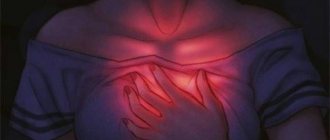Metaphorical maps are a new, but already proven direction in psychology, related to projective methods. Psychologists who use associative maps in their work confirm their effectiveness. The advantage of this method is that you can work with cards independently to develop creativity and imagination.
What are metaphorical cards?
Metaphorical associative cards (MAC) are a set of cards or postcards that depict various kinds of events, figures, faces, nature, objects, animals, abstractions. Why are metaphorical maps needed, which sometimes seem like simple and primitive pictures? Psychologists say that such primitiveness is deceptive, and working with cards is multi-layered and gives an excellent healing, therapeutic effect in a short time.
Metaphorical cards in psychology
Metaphorical maps in the work of a psychologist are a powerful and effective tool that allows you to explore associations and images of the human subconscious. It is a known fact that the subconscious mind resists being manifested, and such a projective technique as MAC helps to bypass this resistance and reveal the subjective reasons for ineffective patterns of behavior and response.
The purpose of working with metaphorical cards
Psychosomatics and metaphorical cards as a diagnostic method have long been used in the work of psychologists to identify the problem that served as the impetus for the development of an existing condition or disease. Any area of psychology, be it family, individual or group, can use associative cards as a serious helping tool. Goals of working with MAC:
- bypassing rational thinking;
- implementation of dialogue “internal - external”;
- reconstruction of past events that led to the emergence of phobia, neurosis, psychotrauma;
- clarification of current experiences and needs;
- completion of “unfinished” events that take away energy;
- modeling a time line from past to future.
What are MACs and what are they for?
Metaphorical associative cards (MACs) first appeared back in 1975 thanks to the efforts of the artist and art critic from Canada Eli Raman, together with a psychotherapist and, part-time, the founder of the publishing house OH Verlag, which released the first deck.
The cards were named after the name of the publishing house - “OH” (an interjection expressing surprise).
The ideas of Tarot cards, I Ching and other occult practices were taken as a basis, in which randomly selected images or numbers were used, but in this case their mysterious, magical ability to predict a person’s fate was excluded.
The MAC featured pictures that could be freely interpreted. The deck was also supplemented with cards with words .
From images and words a collage could be made, which, according to the authors’ idea, could not only act as a catalyst for a person’s imagination and activate his creative activity, but also be an excellent material for a psychotherapist.
When compiling and interpreting collages, psychological phenomena such as transference, projection, and differences in perception can be observed.
In 2006, metaphorical associative maps were already translated into 18 languages , and many other developments were added to them.
At the moment, there are many types of decks ; they are published by various publishing houses, including the Genesis , which specializes in publishing literature on psychology.
Metaphorical cards - types
Such different metaphorical cards - the meaning of each deck depends on the theme. There are more narrowly focused ones, and there are universal ones. But they are all very resourceful. The most popular MACs among psychologists are:
- “ Persona
” – a set of cards with people’s faces, reflecting different emotions and states; - “ Tandu / Tandu
” – associative cards for working out relationships in a couple; - “ Ecco / Ecco
” – unleashing creative potential; - “ Cope
” – work with mental trauma; - “ Saga
” – development of imagination and creative potential; - " Morena
" helps to see the resource; - “ She
” is a female, very resourceful deck; - “ Windows and Doors
” – working with states, searching for resources, new solutions; - “ From the Chest of the Past
” - working through childhood traumas, neuroses, attitudes.
Subtleties and nuances in choosing metaphorical cards
Due to the widespread use of associative cards in psychotherapy, they are made in a large assortment, but they are similar to each other with the same visual configuration.
The following typical sets of cards are distinguished:
- social (image of human faces with different emotions);
- social contact (depicting interaction between people or a group of people);
- abstractions (geometric colorful shapes and other colorful abstract designs);
- emotional (drawings showing the relationship of psychological attachment to something);
- projective (pictures with an unfinished action, with an unfinished piece of furniture, etc.);
- analytical (images of an action, deed, situation);
- evaluative (drawings that depict only a woman or only a man);
- situational (image of household items, buildings, structures);
- analysis of childhood and the past (drawings depicting children, toys, animals).
After determining the client’s problem situation and the main reason for its occurrence, the specialist must carefully consider the choice of metaphorical cards, select the desired type among them, in order to obtain voluminous associations during a psychological conversation.
How to choose metaphorical cards for yourself?
The best metaphorical cards are those that meet a person's goals, preferences and tastes. The connection with the deck is formed intuitively; for some, just one glance at the deck is enough to feel a connection with the images captured in it. Trust your feelings, hold it in your hands. In a psychologist’s office, the principle of choosing a deck is exactly the same: let your gaze “spot” the deck that will respond, if there are several of them (usually this is the case). Many existing MAC decks are multidimensional and allow you to work on different areas of life.
Metaphorical cards - how to work?
Working with metaphorical cards begins with the client’s existing request, what he comes to the psychologist with. In independent work, the principle of having a problem and a request associated with it also applies. Metaphorical cards, exercises and methods in each specific deck may differ, but in general, there are two strategies for working with metaphorical cards:
- Open
. In front of a person, the deck lies with the images facing up. The psychologist asks a question and the client selects cards for his condition, how he feels. The technique is considered safe, fully controllable, which instills trust and relaxation, and anxiety is reduced. - Closed
, or another way to call it - fortune telling, is a method of choosing cards blindly, as in traditional predictions, for example, Tarot. This technique of selecting random cards involves deeper work and is perceived intuitively by a person as a message from above, a “finger of fate,” which makes the technique more attractive, intriguing, and can increase anxiety, which is why it is used by a psychotherapist after working in an open technique.
Techniques with metaphorical cards
Fortune telling on metaphorical cards can be done using the following techniques:
- Changing the point of perception
(M. Egetmeyer). 2 cards are drawn blindly. One symbolizes the problem, the second the solution. The person briefly tells how he sees it - a problem-solution through images coming from the map. The cards are then renamed: the one that was the problem becomes the solution and vice versa. To move from one state to another, you can draw another card from another deck. - Drawing
. Pull a card from the stack and place it on a blank sheet, as it feels out of condition. The task is to complete the picture, continuing it on the sheet. Describe what happened. - Analysis of existing relationships
. Blindly draw 5 cards, each of which has a question, and the cards will be the answers to these questions:
- “What stopped working in this relationship?”;
- “My responsibility in this relationship?”;
- “Partner's responsibility?”;
- “What works in relationships?”;
- “What needs to happen for relationships to change?”
Techniques for working with metaphorical cards
You can work with metaphorical cards in any way you like, you can even come up with your own techniques for working with them. The following options are offered:
- Select from all the cards a picture of the current state and a picture of the ideal state. The third card may show a state that may become transitional.
- "Obstacles and Opportunities." Each participant chooses 5 cards at random. The first player chooses a card associated with the problem. The second participant must, from all his cards, offer the one that shows a possible solution to the problem. If his proposal does not suit the first player, then he offers another option.
- "The place and time of my dreams." Here the client selects one card at random, and then describes what time it is, where the events take place, what exactly is happening here, what capabilities he must have for all this to happen.
- "Getting out of the deadlock." The layout helps a person see the problem and solve it. First, one card is taken that best shows his problem. He must tell why exactly she demonstrates his problem, by what signs he understood this. The second card should show a door that could be a way out of the situation. A person must talk about this method of solving a problem, why he sees it exactly, why he cannot achieve it. The next three cards should be chosen depending on what obstacles a person sees in his path. Why exactly them, what scares him about them, why can’t he overcome them? The last card is a resource card. What can the client do to solve his problem?
- "Shadow". The client first selects a card that represents his current state and a second card that represents its opposite. If it is impossible to describe with one card, the use of two or more cards is allowed. The client must describe both antipodes, and also consider options for how to combine two images into one.
go to top
Metaphorical associative cards - training
Metaphorical cards are best trained by certified specialists or authors of those decks that you would like to use in your work. There are many courses on metaphorical maps and you can take them remotely online if you are not able to attend the training in person. Various art therapy courses that are popular today include a section on working with MAK. But the most effective training is considered to be practice, gaining experience in working with cards and reading professional literature, sharing experience on forums dedicated to working with associative decks.
Metaphorical cards - books
Association cards belong to projective techniques, which are considered a very effective tool for a psychologist. Each specialist has his own favorite decks; not all of them have manuals, because metaphorical associative cards are more of an intuitive tool. In general, there are standard general rules for working with cards. Some popular decks are so loved by psychologists, and all the experience gained is reflected in the following books:
- “ Metaphorical cards
” by G. Katz, E. Mukhamatulina. The use of association cards in consulting, business coaching, and individual work with children and adults. Review of different decks. - “ Associative cards in working with a difficult case
” N. Dmitriev, N. Buravtsev. This guide will be useful in working with deviant teenagers and in the treatment of crisis conditions. The book is interesting for students and practicing professionals. - “ Metaphorical associative cards in family counseling
” S. Tolstaya. The manual describes effective techniques and methods for working with different decks, showing aspects of working in the following family systems: marital, child-parent and sibling. - “ 50 MAC technicians for all occasions
” T. Demeshko. The useful material presented in the book examines aspects of working with health, career, family relationships, and finances. - “ From everyone’s life
” Metaphorical cards in group work. T. Pavlenko. The manual is replete with different techniques for working with decks and touches on the topic of eating disorders - how you can work with this through the MAC.
Scientific research on the topic of metaphorical association cards
Metaphorical associative cards - many dissertations have been written on this topic, many proprietary techniques and decks have been developed. The study confirmed that the human subconscious “thinks” in symbols and images, this is the simplest language for expressing outwardly what is in the subconscious, but the result is always impressive. What cannot be said and expressed directly during a regular consultation is more easily achieved when working with associative cards - this has a huge therapeutic effect.
How to use psychological maps?
The process of psychological counseling begins with a discussion of the client’s problem, his feelings and emotions, experiences, and fears. The specialist must determine which work technique to choose in the context of using psychological maps. Consultation stages include:
- problem definition;
- establishing trusting relationships;
- selection of metaphorical cards;
- visualization of pictures by the client;
- independent analysis of the emotions that are evoked by the images on the cards;
- analysis by a psychologist about the client’s feelings that arose after viewing psychological cards.
Metaphysical maps have been widely used in psychology since the birth of the school of psychoanalysis. The founder of the school, Sigmund Freud, actively used hypnosis to treat hysteria; during consultations, he noticed that some people do not immerse themselves deeply enough in a state of hypnotic sleep, as a result of which it is impossible to achieve the goal of the session. He turned his attention to the reservations that clients made during conversations, the comparisons that they made when talking about their problem. This became the basis for the development of the psychological technique of free association, which is still successfully used in psychology and psychiatry today. With the advent of psychological maps, a synthesis of associative and visual methods occurred.
The main areas of psychological assistance in which metaphorical cards are used are:
- resolving emotional conflict;
- building a strategy for behavior in crisis situations;
- managing feelings and experiences;
- reducing the level of psychological stress at the time of loss of a loved one;
- getting rid of phobias and fears;
- getting rid of psychological complexes;
- changing behavior patterns in case of deviant behavior in adolescents;
- treatment of depression, autism, dysmorphomania, recurrent affective disorders.
The use of metaphorical cards in the field of psychiatry allows the doctor to organize the process of psychotherapy more productively, which in some cases makes it possible to reduce the amount of consumed psychotic drugs, which have a lot of side effects for the patient.










